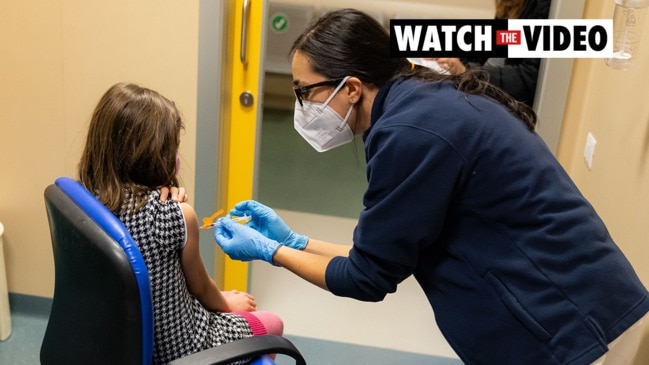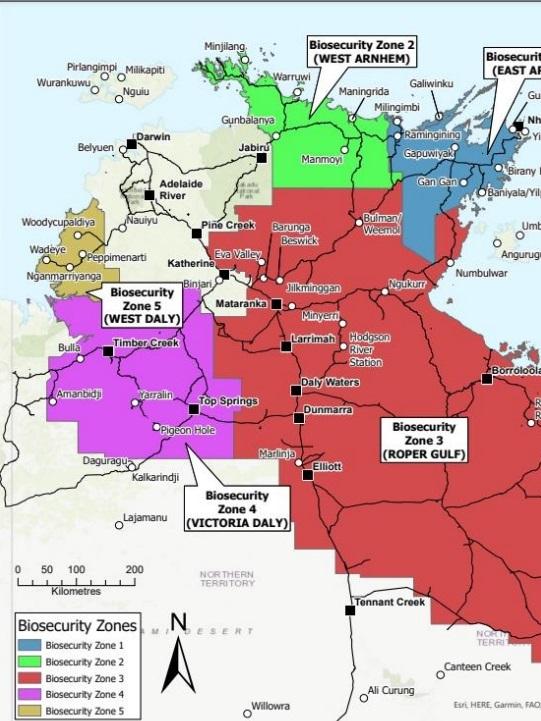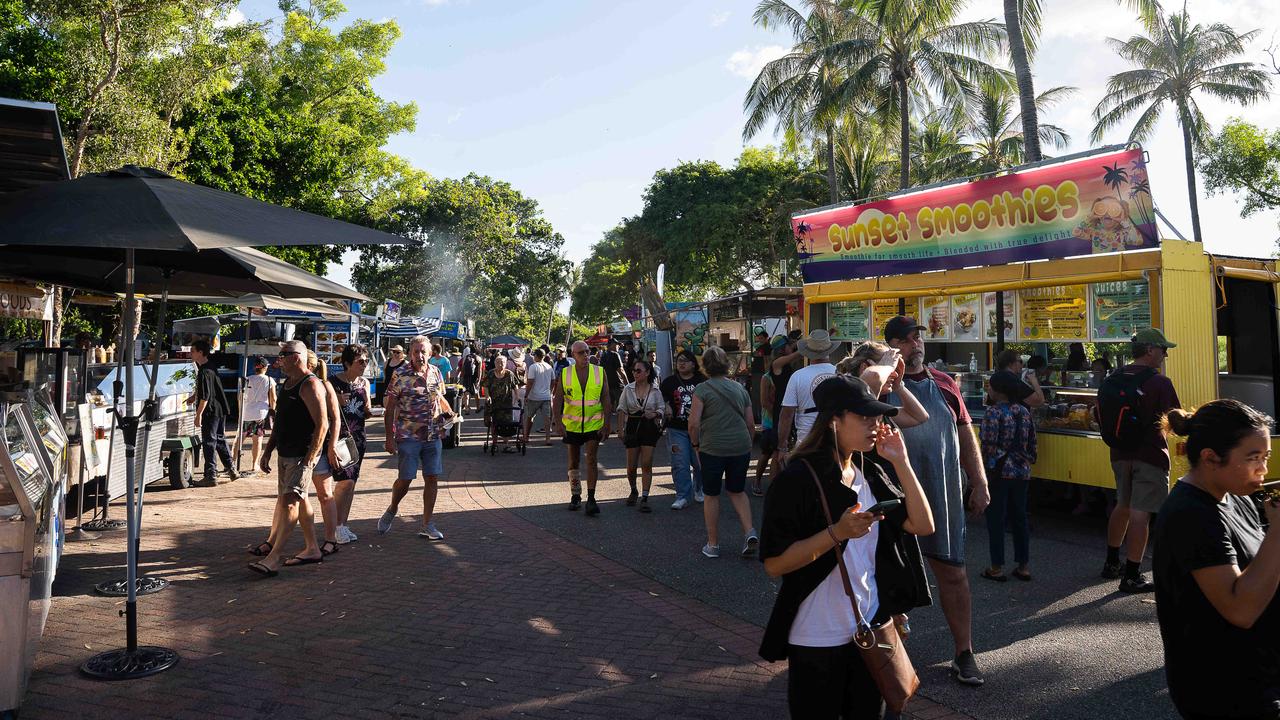‘We should have known’: health experts in the dark about key Covid data
Experts are furious with the government’s slow response as covid death toll rises in the NT.

News
Don't miss out on the headlines from News. Followed categories will be added to My News.
UPDATE: The government’s adhoc reporting of Covid data has caused frustration with peak Aboriginal health bodies.
AMSANT chief executive John Paterson said they have been drip-fed data on critical Covid information including deaths.
“We should have known, we all should have known earlier. We are disappointed we didn’t know about the Kintore passing on Friday when it happened,” Mr Paterson said.
“We understand the government knew about the person passing on at least Saturday, but delayed announcing it by nearly 48 hours announcing it to the public.”
Mr Paterson said releasing timely and accurate data was critical to ACCHOs daily operations.
“We need to know the numbers, so we can ensure the right people are in the right places,” he said.
“Some of our services cover hundreds of kilometres and are already stretched thin with staff,”
But Mr Paterson also said there was a cultural component to understanding the data.
“The sooner we know the better, because it is also about providing cultural and emotional support to our members.”
The Territory’s fifth Covid fatality was announced via press release late on Sunday night.
EARLIER: HEALTH experts warn that “complacency” in the NT Government’s Covid response will cost lives as the Territory records the highest per capita rate of hospitalisations in the country.
The Aboriginal Medical Services Alliance Northern Territory expressed concern after the NT outbreak was described as being “under control” — despite 158 people in hospital, three Covid-related fatalities in the past week and 3 per cent of the population testing positive for the virus.
“The Covid outbreak has demonstrated that complacency and overly-optimistic assurances present a real risk of avoidable adverse consequences,” AMSANT chief executive John Paterson said.
“We know we can’t stop spread but we need to still flatten the curve as case numbers continue at 1000 a day with no sign of the peak they have been promising for weeks.
“The high case numbers will continue to translate into high hospital numbers if we don’t slow it down.
“We are very thankful for the low number of deaths but every death matters.”
Mr Paterson said evidence that the outbreak was out of control was not being sufficiently acknowledged.
He said there were more hospitalisation than what the Doherty Institute estimated the Territory could safely manage.
Mr Paterson said this was evidenced by the cancellation of elective surgeries, hospitals are relying on overtime and double shifts, and specialist outreach services remain cancelled.
He said workforce burnout and disruption, including among non-Covid public health care workers, was a threat to the current outbreak response and recovery.
Mr Paterson said around 10 government clinics in Central Australia remain with reduced or only visiting services.
Mr Paterson said this was worsened by the number of staff forced off shifts because of a positive case.
He said too many people still had not received their boosters, and a significant shortage of RATs had slowed testing in many communities, although testing availability was improving.
“We understand that this is largely a mild disease for those who are fully vaccinated especially where boosted but too many people aren’t,” Mr Paterson said.
“Boosters are essential protection particularly for older and sicker people who still have significant risk of hospitalisation if they are only double vaccinated.”
Mr Paterson said issues around self-isolating in overcrowded homes had still not been addressed.
“We need to do more to flatten the curve and the single most important additional measure is to ensure positive people are provided a safe place to isolate where they can be fed and supported when this cannot be achieved in their homes,” he said.
“This would help stop positive people moving around in the community because they have to get food and because they don’t want to stay at home and infect others.”
He repeated earlier calls for group isolation facilities so cases in remote communities could protect their families.
“There should be group isolation facilities at least in all the regional centres so transport is not the major barrier it has been and it’s not too far from home, ”Mr Paterson said.
“People need to be able to mix and move while infected inside a supportive facility. This has not been possible in Central Australia at all.
“We are going to need these places for the next 12 months or more and isolated hotel rooms are not acceptable.
He said extending the mask mandate, which ended on Saturday, would help stop the spread.
“We know positive people are moving round in towns and communities and we need them to be wearing masks at all times,” he said.
‘Reassessed our approach’: CHO rules out lockdowns
UPDATE FEB 4: CHIEF health officer Dr Hugh Heggie has written to the Territory’s peak health bodies, defending the government’s handling of the Omicron outbreak.
In a letter obtained by the NT News, Dr Heggie said the government had “reassessed their approach … to provide the best and more proportionate response to Territorians and to ensure that we use our resources in the most effective and sustainable manner”.
The comments are a thinly-veiled rebuke against calls for lock downs to be introduced across vast areas of the Northern Territory.
Dr Heggie said the Omicron variant had clearly shown itself to be “causing milder illness than previous variants”.
“This, combined with the Territory’s vaccination rates, is significantly reducing the risk of severe disease and hospitalisations,” he wrote.

“However, we know that hospitalisation rates remain higher among Aboriginal Territorians.
“Therefore, our focus must be on identifying our most vulnerable as well as patients that develop more severe disease and to offer them the treatment they need as early as possible.”
Dr Heggie said when a community reported its first case of Covid-19, health teams would assess the vaccination rates and various other health factors before deciding what measures to take to stem the spread.
Surge in positive cases as residents isolate on verandas
PALUMPA: A COMMUNITY is reeling after Covid positive cases have been forced to isolate in an office for days at a time.
According to Thamarrurr Development Corporation (TDC) chief executive Scott McIntyre about 70 people in Nganmarriyanga (Palumpa) community, nearly 50 per cent, were now positive, however the process around Howared Springs or other facility transfer was unclear.
“Many are still waiting to be transferred to Howard Springs quarantine facilities. Opening up our office was supposed to be a temporary solution to get cases out of overcrowded homes,” he said.
Mr McIntyre said about 24 people were currently using the temporary isolation facility but there were only 10 beds.
“Given the overcrowding some of the people in isolation have moved into the annex area, which is exposed to the elements and will leak onto the beds when rain comes,” he said.
Approximately 64 per cent of the community live in overcrowded homes according to NT Homebuild data.
The situation was rapidly escalating, with a further 16 people also isolating in the donga at the local school. Children who had tested positive were also being separated from parents and sent to the centre without supervision.
“These facilities were never intended to be used for this; they have no toiletries or and limited hygiene facilities,” Mr McIntyre said.
“This raises serious hygiene issues – just because they all have Covid does not mean that they couldn’t spread other diseases while forced into close, unhygienic contact.”
The NT Health run clinic in the community has also come under fire after apparently turning people away in the fortnight leading up to the outbreak.
“Before the outbreak, the local clinic was reluctant to test locals, even when they had symptoms,” said Mr McIntyre.
“Two weeks before the outbreak, the local council reported sending over people who were showing symptoms and being told that they were only testing people who had “travelled”.
Mr McIntyre said the capability of remote towns to manage this without support was naive. “There is very limited support staff on the ground and given the lack of resources, they are forced to have contact with Covid positive patients without appropriate PPE or training to prevent infection,” he said.
“When they inevitably become sick, there will be no-one available to provide meals, keep the local shop running, provide care and support to aged care or care to NDIS clients in Palumpa.”
EARLIER: AN ESCALATING Covid outbreak in the Territory has provoked the Federal Government to declare a biosecurity zone across Northern, Central and Tiwi Land Councils.
The Northern Land Council welcomed the increased suppression measures.
The five top-end bubbles restrict movement of Aboriginal communities outside of their regional zone. Families will be able to move within the bubble but not travel through regional centres like Darwin and Katherine.
The Federal decision follows a week of calls from local Aboriginal leaders pleading with the NT Government to lockdown remote NT.
Chairman of the NLC, Samuel Bush-Blanasi said the council had received calls from Traditional Owners and community members for weeks.
“They want to stop people coming in from outside. These Biosecurity zones or ‘bubbles’ will help slow the spread of Covid out bush and give us more time to get more people their second and third jabs. We also have to get vaccinations for our kids 5 years old and up. School is back and they need to be vaccinated.”

Health Minister Greg Hunt announced that the biosecurity zone would prevent people from entering or exiting the remote regional zones in the Northern Territory.
“Remote communities in the NT continue to see escalating cases of Covid-19,” Mr Hunt said.
“The situation required a broader public health response to supplement the Northern Territory Government’s response.
“These measures will help to contain the current outbreak by restricting entry into, and exit from, these communities.”
Travel both into and out of Biosecurity Zones will be restricted. People will be free to move within each Zone. Public roads, freehold land and pastoral leaseholds are excluded
Mr Bush-Blansi said there will be some exemptions permitted but will require evidence of a negative RAT test.
“But not if you’ve got the Covid – then you will have to isolate and stay in quarantine,” said Mr Bush-Blanasi.
All essential services will be able to leave and enter under strict Covid Safe Plans so that essential services like health, police, fuel and food to communities are maintained.
If people have medical or other emergencies they are automatically exempted to travel to hospital, for example, for treatment and to return.
The measures also follow news Tiwi Bombers have withdrawn from the remainder of the NTFL season as the Covid cluster continues to grow beyond 200.
The heightened health measures were complemented by more targeted restrictions for communities with high case numbers, namely Milikapiti, Milingimbi, Palumpa, Ampilatwatja, Elcho Island including Galiwin’ku, Wessel Islands including Martjanba, and Lajamanu.
Biosecurity zones are expected to remain in place until February 17.
Mr Hunt said the measures are being implemented based on the best public health advice and will be in place only as long as necessary to keep the community safe.
He said the measures followed the medical advice from the Chief Medical Officer Professor Paul Kelly, requests by the Northern Territory Government and the support of the Central Land Council, Northern Land Council, Tiwi Land Council, the Aboriginal Medical Services Alliance of the Northern Territory, and the National Aboriginal community
Controlled Health Organisation.

Territory Health Minister Natasha Fyles said the federal health measure was part of the pandemic process, with similar biosecurity zones set up in 2020.
“These are focused specifically on those communities where we’re seeing outbreaks and to stop travel between communities so that we can try and slow the spread of the virus,” Ms Fyles told the ABC.
She said enforcement of the zones would fall to NT Police and Federal Environmental Health Officers.
“At this stage, there’s no plans for Defence to join us on the ground, but it’s something that we haven’t rules out into the future,” Ms Fyles said.
Mr Hunt said the response was backed by the Kirby Institute and University of Melbourne modelling for remote community outbreaks, and was in line with the Management Plan for Aboriginal and Torres Strait Islander Populations
“All residents of the Northern Territory are encouraged to continue to follow their local Health Department directions, to be tested in the coming days, and to book their vaccinations,” he said.
The designated zones are:
Central designated zones
Barkly designated zone
Alpurrurulam
Alyawarr
Patta.
Central Desert designated zone
Akityarre
Anmatjere
Daguragu
Northern Tanami
Southern Tanami.
MacDonnell designated zone
Iyarrka
Ljirapinta
Luritja Pintubi
Rodinga.
Tiwi Islands designated zones
the ward of Bathurst Island.
Melville Island designated zone
Milikapiti;
Pirlangimpi.
Northern designated zones
East Arnhem designated zone
the ward of Birr Rawarrang
the ward of Gumurr Gattjirrk
the ward of Gumurr Marthakal
the ward of Gumurr Miwatj (with exclusions)
the ward of Gumurr Miyarrka.
Roper Gulf designated zone
Kuwarrangu
Never Never
Numbulwar Numburindi
Nyirranggulung
South West Gulf
Yugul Mangi.
Victoria Daly designated zone
the ward of Timber Creek, excluding the following:
NT Portion 7278 (Jiylinum Community Living Area);
NT Portion 3046 (Marralum Outstation);
the ward of Walangeri.
West Arnham designated zone
Gunbalanya;
Maningrida;
Minjilang;
Warruwi.
West Daly designated zone
Nganmarriyanga;
Thamarrurr / Pindi Pindi;
Tyemirri.
More Coverage
Originally published as ‘We should have known’: health experts in the dark about key Covid data




